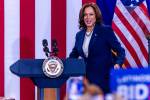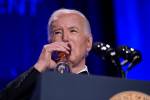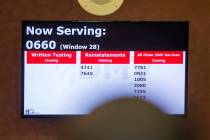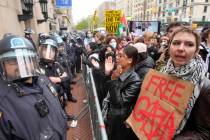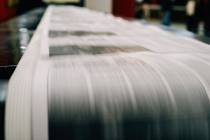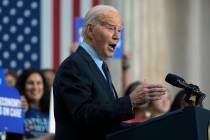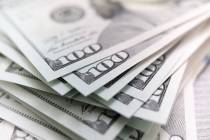Interpreting data a subjective job: One man’s sign of hope is another’s proof of doom
Take a step back and it’s possible to be amazed at the amount of emotion we invest in sports and politics.
Grown men – most of whom were born thousands of miles from their “home field” – get paid hundreds of thousands of dollars to don a colorful uniform and spend a couple of hours on the field. Win or lose, they’ll suit up again next week. Yet we shout ourselves hoarse over a penalty call?
In politics, let’s not call our votes unimportant – voters have a duty to study policy positions as well as candidates’ judgment and character, and choose soberly. But the intensity of the hostility and partisanship exhibited during the final weeks of a presidential race is still a phenomenon that eventually will generate a raft of Ph.D. theses, if it hasn’t yet.
Maybe it’s healthy. Americans vent in their overwhelmingly nonviolent rhetoric a level of anger and frustration that leads people in other countries to pick up grenade launchers and burn things down.
It’s everywhere, though. Letter writers inform us they detect political prejudice even in the reporting of economic statistics that would be seen as largely innocuous in any other month or year.
Is the economy getting worse, or is it stuck in neutral? You’re only saying that to help the chances of challenger Mitt Romney and the Republicans. There’s been some marginal improvement in a key indicator? That proves it: You’re obviously in the tank for President Obama, spinning the numbers to make his administration look good. How can you sleep at night?
No one’s fudging the statistics, so far as we can tell. As to how they’re interpreted? There’s room for discussion.
New 2011 census data released last week show a slight uptick in the number of Americans who picked up and moved during the 12-month period ending in March. In its widely published report on the data, The Associated Press quotes Andrew Cherlin, professor of sociology and public policy at Johns Hopkins University, to the effect that this could indicate “the beginning of the American family’s recovery from the Great Recession,” as young adults move out of their parents’ homes because of increased confidence they can find jobs.
Nationwide, the most common Friday newspaper headline based on this data was some variant of “Census data another sign economy has bottomed out.” The Review-Journal opted for “Economy on mend: People on move positive sign.”
But Mr. Cherlin, an expert on the breakdown of the institution of marriage, is described by the Brookings Institution – hardly a nest of right-wingers – as “a liberal.” Who’s to say he can be fully objective about these numbers? Some other expert just as easily could have said, “This proves how desperate people are – they’ve given up trying to find work where they live, and they’re gambling their last handful of cash on a move to another state, even if they have to sleep in their car.”
Further down in the same story, The AP admits “The jobless rate remains high at 8.1 percent. While housing sales have more recently gained, home ownership last year dropped for a fifth straight year to 64.6 percent. … More Americans than ever are turning to food stamps. … The Index of Leading Economic indicators, designed to forecast future economic activity, dipped 0.1 percent in August after rising 0.5 percent in July and dropping 0.5 percent in June.”
A recovery?
Here in the Silver State, numbers released Friday show statewide unemployment moved up one-tenth of a percentage point to 12.1 percent in August from July, the second straight month the jobless rate increased after hitting a three-year low in May. The increase in the seasonally adjusted rate, coming after a jump of four-tenths of a percentage point in July, continues to make Nevada the state with the highest unemployment rate in the nation.
The rate is still well below the 13.8 percent jobless rate reported in August 2011, according to the state. The Las Vegas area had an unadjusted jobless rate of 12.3 percent in August.
However, the state lost 1,000 jobs from July to August, the third straight month of declines.
But as everyone must know by now, the unemployed referred to here include only those still looking for work. Those who have exhausted their jobless benefits and are no longer actively looking don’t show up in these numbers. Include all potential workers, and the U.S. Department of Labor admits Nevada’s true “U6” unemployment rate, as of last spring, stood at 22.1 percent.
At the very least, it’s not a roaring economic recovery. In fact, let’s go one step further and say any current recovery is fragile and could be easily laid flat by something as remote as a cascade of bank defaults as far away as Greece, Italy or Spain.
As to which candidate or party – if any – has the right plan for rapid improvement: Congratulations. You get to choose.



